Related Research Articles

Omaha is the most populous city in the U.S. state of Nebraska and the county seat of Douglas County. It is located in the Midwestern United States along the Missouri River, about 10 mi (15 km) north of the mouth of the Platte River. The nation's 40th-most populous city, Omaha had a population of 486,051 as of the 2020 census. It is the anchor of the eight-county Omaha–Council Bluffs metropolitan area, which extends into Iowa and is the 58th-largest metro area in the United States, with a population of 967,604. Furthermore, the greater Omaha–Council Bluffs–Fremont combined statistical area had 1,004,771 residents in 2020. Omaha is ranked as a global city by the Globalization and World Cities Research Network, which in 2020 gave it "sufficiency" status.

The Omaha World-Herald is a daily newspaper in the midwestern United States, the primary newspaper of the Omaha-Council Bluffs metropolitan area.
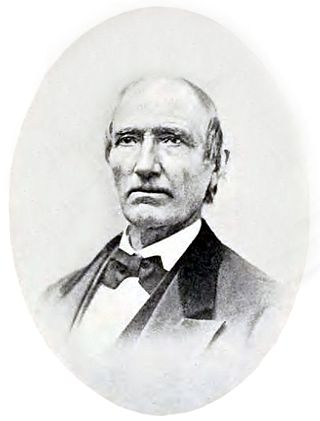
Ansel Briggs was an American pioneer who rose from a stagecoach driver to a member of the Iowa Territorial House of Representatives (1842–1846) and the first Governor of Iowa (1846–1850).
Cabanne's Trading Post was established in 1822 by the American Fur Company as Fort Robidoux near present-day Dodge Park in North Omaha, Nebraska, United States. It was named for the influential fur trapper Joseph Robidoux. Soon after it was opened, the post was called the French Company or Cabanné's Post, for the ancestry and name of its operator, Jean Pierre Cabanné, who was born and raised among the French community of St. Louis, Missouri.
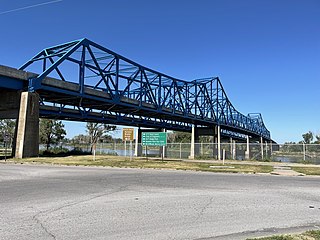
The Mormon Bridge is a bridge composed of two cantilevers that crosses the Missouri River connecting Pottawattamie County, Iowa with the Florence neighborhood of Omaha, Nebraska via Interstate 680 (Iowa-Nebraska). The bridge is officially called the Mormon Pioneer Memorial Bridge due to its location on the historic Mormon Trail, which passed nearby.

Fontenelle's Post, first known as Pilcher's Post, and the site of the later city of Bellevue, was built in 1822 in the Nebraska Territory by Joshua Pilcher, then president of the Missouri Fur Company. Located on the west side of the Missouri River, it developed as one of the first European-American settlements in Nebraska. The Post served as a center for trading with local Omaha, Otoe, Missouri, and Pawnee tribes.
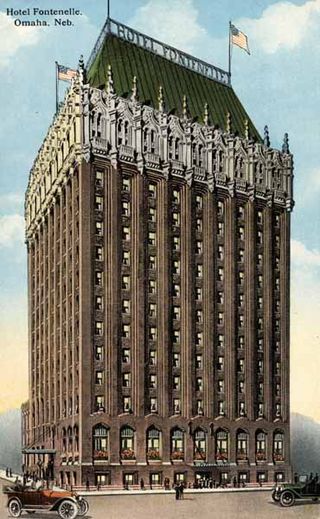
The history of Omaha, Nebraska, began before the settlement of the city, with speculators from neighboring Council Bluffs, Iowa staking land across the Missouri River illegally as early as the 1840s. When it was legal to claim land in Indian Country, William D. Brown was operating the Lone Tree Ferry to bring settlers from Council Bluffs to Omaha. A treaty with the Omaha Tribe allowed the creation of the Nebraska Territory, and Omaha City was founded on July 4, 1854. With early settlement came claim jumpers and squatters, and the formation of a vigilante law group called the Omaha Claim Club, which was one of many claim clubs across the Midwest. During this period many of the city's founding fathers received lots in Scriptown, which was made possible by the actions of the Omaha Claim Club. The club's violent actions were challenged successfully in a case ultimately decided by the U.S. Supreme Court, Baker v. Morton, which led to the end of the organization.

Augustus Hall, a lawyer, was a one-term Democratic U.S. Representative from Iowa's 1st congressional district, and chief justice of the Nebraska Territory.
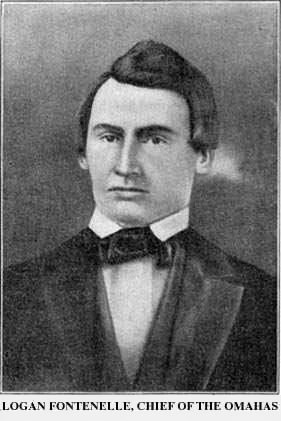
Logan Fontenelle, also known as Shon-ga-ska, was a trader of Omaha and French ancestry, who served for years as an interpreter to the US Indian agent at the Bellevue Agency in Nebraska. He was especially important during the United States negotiations with Omaha leaders in 1853–1854 about ceding land to the United States prior to settlement on a reservation. His mother was a daughter of Big Elk, the principal chief, and his father was a respected French-American fur trader.
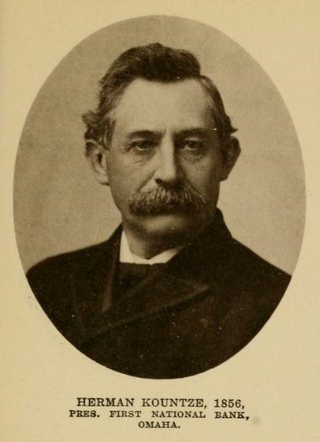
Herman Kountze was a powerful and influential pioneer banker in Omaha, Nebraska, during the late 19th century. After organizing the Kountze Brothers Bank in 1857 as the second bank in Omaha, Herman and his brothers Augustus, Charles and Luther changed the charter in 1863, opening the First National Bank of Omaha that year. Kountze was involved in a number of influential ventures around Omaha, including the development of the Omaha Stockyards and the Trans-Mississippi and International Exposition of 1898. Immediately after his death Kountze was regarded as one of Omaha's "old settlers". Today Kountze's First National Bank is the oldest bank west of the Mississippi River, and continues as a privately held company in its sixth generation of family ownership.
The Omaha Claim Club, also called the Omaha Township Claim Association and the Omaha Land Company, was organized in 1854 for the purpose of "encouraging the building of a city" and protecting members' claims in the area platted for Omaha City in the Nebraska Territory. At its peak the club included "one or two hundred men", including several important pioneers in Omaha history. The Club included notable figures important to the early development of Omaha. It was disbanded after a ruling against their violent methods by the U.S. Supreme Court in 1860 in Baker v. Morton.
The Lone Tree Ferry, later known as the Council Bluffs and Nebraska Ferry Company, was the crossing of the Missouri River at Council Bluffs, Iowa, and Omaha, Nebraska, US, that was established in 1850 by William D. Brown. Brown was the first pioneer to see the potential for a city on the site, and the landing became a popular gathering site for the first settlers of the Nebraska Territory. Named after a solitary tree on the Nebraska bank of the river, the Lone Tree Ferry became central to the founding and development of the City of Omaha.
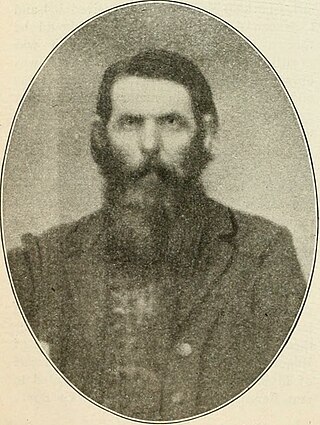
William D. Brown was the first pioneer to envision building a city where Omaha, Nebraska sits today. Many historians attribute Brown to be the founder of Omaha, although this has been disputed since the late nineteenth century. Alfred D. Jones, the first postmaster of Omaha, laid strong claims to the title himself, suggesting that he told Brown about the potential for a town. Brown was also a member of the Second Territorial Legislature for the Nebraska Territory.

Transportation in Omaha, Nebraska, includes most major modes, such as pedestrian, bicycle, automobile, bus, train and airplane. While early transportation consisted of ferries, stagecoaches, steamboats, street railroads, and railroads, the city's transportation systems have evolved to include the Interstate Highway System, parklike boulevards and a variety of bicycle and pedestrian trails. The historic head of several important emigrant trails and the First transcontinental railroad, its center as a national transportation hub earned Omaha the nickname "Gate City of the West" as early as the 1860s.
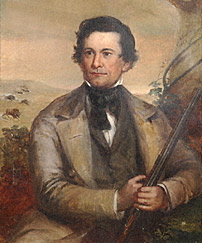
Peter Abadie Sarpy (1805–1865) was the French-American owner and operator of several fur trading posts, essential to the development of the Nebraska Territory, and a thriving ferry business. A prominent businessman, he helped lay out the towns of Bellevue and Decatur, Nebraska. Nebraska's legislature named Sarpy County after him in honor of his service to the state.
Significant events in the history of Omaha, Nebraska, include social, political, cultural, and economic activities.
The Bellevue War was a shootout between a posse led by Sheriff W. A. Warren and Thomas Cox against a group led by W. W. Brown that took place in Bellevue, Jackson County, Iowa Territory, on April 1, 1840. A large mural made by local artists commemorates the incident at the site of Brown's Hotel where it occurred. Political tensions in Bellevue dated back to 1837, when Yankee businessmen arrived at the town, causing tensions with the original settlers. The original settlers banded with wealthy hotelier W. W. Brown, who provided them with credit and an opportunity to work. A shooting on January 8, 1840, further intensified the situation.
Nashville is an unincorporated community in Jackson County, in the U.S. state of Iowa.
Cottonville is an unincorporated community in Jackson County, Iowa, United States.
Van Buren is an unincorporated community in Jackson County, in the U.S. state of Iowa.
References
- 1 2 3 Snodgrass, Mary Ellen (2015). Settlers of the American West: The Lives of 231 Notable Pioneers. Jefferson, North Carolina: McFarland. pp. Kindle Edition.
- ↑ Wilson, Anna. "Reminiscences of Mrs. Anna E. Wilson." In History of Jackson County, Iowa. James Whitcomb Ellis, editor. S. J. Clarke, 1910: pp. 339 - 341.
- 1 2 3 4 Buckhorn, Farmer (1910). "Faults of History and Idols of Clay, or The Unpopular History of the Bellevue War". History of Jackson County, Iowa (Ellis, J. W., Editor). 1: 427–459.
- ↑ Ellis, James Whitcomb (1910). History of Jackson County, Iowa. Jackson County, Iowa: SJ Clarke. p. 348.
- ↑ Reid, Harvey (1906). "The Bellevue War: A Review". Annals of Jackson County, Iowa. 2: 85–92.
- 1 2 3 4 History of the State of Nebraska. Chicago, IL: Andreas, 1882. Digital transcription. https://www.kancoll.org/books/andreas_ne/
- ↑ Creigh, Dorothy Weyer (1977). Nebraska: A History. New York: W. W. Norton. pp. Kindle Edition.
- ↑ "Florence, Douglas County, Nebraska" [usurped] , Nebraska State Historical Society. Retrieved 4/17/08. No longer accessible.
- ↑ (1856) Laws, Joint Resolutions, and Memorials Passed at the Regular Session of the Nebraska Territorial Legislature. p 177.
- 1 2 "James C. Mitchell" [usurped] , Nebraska State Historical Society. Retrieved 4/17/08. No longer accessible.
- 1 2 3 4 5 Warren, W. A. (1910). "The Bellevue War". History of Jackson County Iowa (Ellis, J. W., Editor). 1: 403–427.
- 1 2 Ellis, J. W. "1910". History of Jackson County, Iowa (Ellis, J. W., Editor). 1: 459–462.
- ↑ Sorenson, Alfred Rasmus (1889). History of Omaha from the Pioneer Days to the Present Time. Gibson, Miller, and Richardson. pp. 78–79.